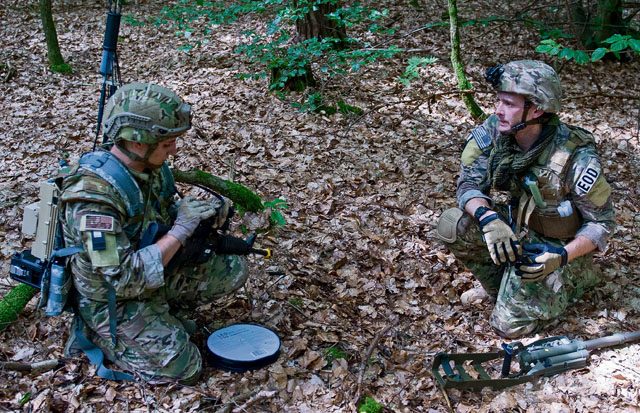
The 786th Civil Engineer Squadron explosive ordnance disposal conducted a field training exercise during the week of July 25 to 28.
The FTX improved mission readiness through multiple scenarios that ensured the EOD Airmen are ready to properly conduct missions in real-world situations.
According to Senior Master Sgt. Tom Pilla, 786 CES EOD flight chief, the event keeps Airmen up to date on EOD capabilities.
“Throughout my time in the service, training has become much more complex for EOD,” Pilla said. “We continue to learn more lessons on how to better condition our Airmen for situations out in the field, whether they’ve been in combat before or not.”
The exercises included dismounted improvised explosive device training, nuclear weapons training and a joint nuclear weapons response operation. In these events, Airmen maneuvered into areas as a team of three and were required to detect possible signs of ordnance or suspicious items laid in the ground.
This training required thorough cooperation, according to Master Sgt. Michael Overton, 786 CES section chief, EOD quality assurance.
“We train Airmen to go in packs of three because they have to learn how important it is to rely on each other,” Overton said. “Each of the team members understand that their primary task is to ensure the safety of the team leader and his execution of the counter-improved explosive device mission.”
According to Overton, this cooperation is an example of the camaraderie EOD Airmen have with one another.
“We’re very close with one another,” Overton said. “This type of training prepares members for the deployed missions and builds team integrity.”
Firefighters from the 786 CES also participated, and according to Master Sgt. Edward Seeley, 786 CES assistant chief of fire department readiness, cooperation with other units across Ramstein is vital to mission success.
“Every chance to work with units such as security forces or EOD, I like to take,” Seeley said. “We learn so much more by becoming involved in larger exercises that come closer to real-life situations. Not only that, but learning a little about their jobs goes a long way when it comes to strategizing what we can do to make a process easier for not just us but all Airmen involved.”


